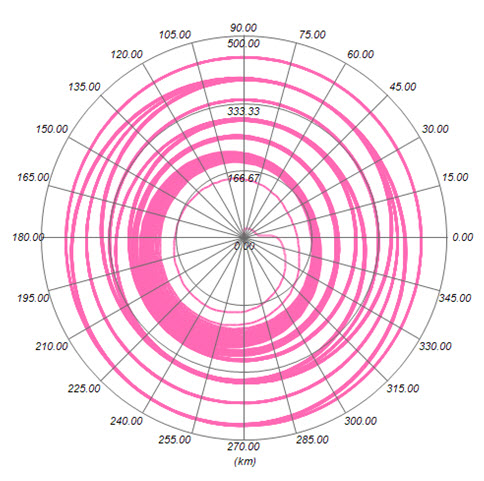The recent uncontrolled reentry of the UARS spacecraft got a lot of attention last week as NASA and the JSpOC tried to track the vehicle as it reentered.
It doesn’t have to be done this way, however. On March 13, 2011, a commercial spacecraft was purposefully reentered into the Pacific ocean 3000 miles southeast of Hawaii. Top-notch Astrogator and Guild member Tim Craychee of Applied Defense Solutions provides a description of the process of the reentry in his 2011 paper here:
Mitigating Potential Orbital Debris: The Deorbit of a Commercial Spacecraft
The paper tells us:
“While it is not known if any spacecraft debris survived reentry, the design of the final orbit was such that potentially surviving debris would impact within a “safe zone” in the Pacific Ocean.
“Instead of abandoning a functioning and commandable satellite in an orbit that would take years to naturally decay, posing an ongoing conjunction threat to other space objects and potentially exacerbating the increasing density of objects in the space environment, a decision was made to command a controlled deorbit of the satellite. However, it is significant to note that there was no mission or regulatory requirement to perform a controlled deorbit and the vehicle was not designed to support such an activity. Thus, there were many ground and space system limitations and constraints that needed to be accommodated as part of the successful execution of this controlled reentry. These factors, along with other requirements and guidelines, influenced the overall trajectory design and implementation.
“With the spacecraft nominal mission ending in March of 2007, the spacecraft continued to orbit without any maintenance maneuvers. This left the vehicle in a slightly decayed orbit from that of its original mission.
“Because initial orbit parameters identified the vehicle at an altitude above the International Space Station (ISS), the deorbit was designed to have two phases. Phase 1 was designed to lower the spacecraft to an approximately circular orbit with a mean radius below that of the ISS. Phase 2 followed and was designed to lower the periapsis altitude such that a reentry occurred with a specific impact location in the Pacific Ocean.
“The design utilized six burn activities for Phase 1 and five burn activities for Phase 2. Two days were incorporated between each maneuver to allow time for telemetry collection and analysis, burn calibration, and updates to future maneuver plans.
“The two phase approach was a conservative strategy designed so that if, due to some unknown factor, any of the maneuver activities happened to be the last, the spacecraft would not be an immediate threat to another space object, with utmost attention given to the manned ISS. Once the design was finalized, the proposed deorbit plan was then submitted to regulatory agencies for government approval, which it received.”
The spiral in towards the Earth is show here (Longitude and Radius);
Craychee and the analysis team verified that the spacecraft would impact the target zone with extensive Monte-Carlo analysis. Monte Carlo results are shown here:
Kudos to Craychee and the ADS team for the successful reentry of the spacecraft. Astrogation at it’s finest. Damn technical!


